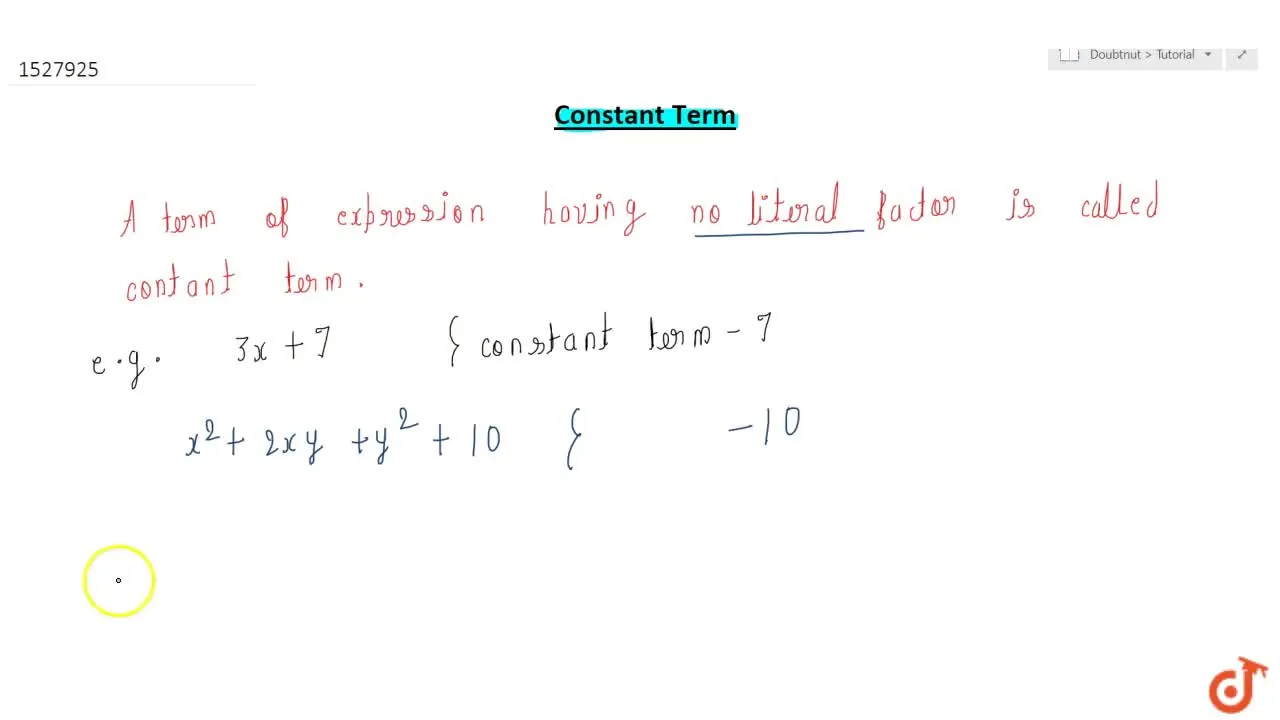constant term a term of the expression having no literal factrol is called a constant term
Step by step video & image solution for constant term a term of the expression having no literal factrol is called a constant term by Maths experts to help you in doubts & scoring excellent marks in Class 7 exams.
Similar Questions
Constant term A term of the expression having no literal factor is called a constant term.
View SolutionAn expression having one term is called a ........ .
View SolutionAn expression having two terms is called a .......... .
View SolutionAn expression having three terms is called a ......... .
View SolutionLike Terms
View SolutionVariable And Constant Terms
View SolutionDegree of a constant term is
View SolutionUnlike terms
View SolutionAn algebraic expression containing three terms is called a
View SolutionCoefficient In a term of an algebraic expression any of the factors with the sign of the term is called the coefficient of the product of the other factors.
View Solution


